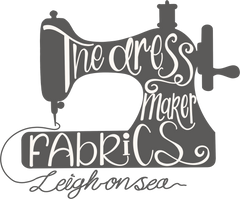West Africa Week!
Judges Patrick Grant and Esme Young are joined by a special guest judge, Nigerian fashion designer Banke Kuku, to introduce the new styles and fabrics being used this week. A quick round-up of the sewers’ reactions showed that the majority of them had not seen a batakari before so the pattern challenge - making a simplified batakari - was shaping up to be interesting. A real challenge is one with a level playing field: everyone has to follow the instructions and work it out. Nine series in, most of the westernised standard sewing patterns have been featured, so it is really interesting to show textiles and garment construction that is going to challenge everyone. Matthew explains ‘it’s really exciting to not know what you are doing and to follow the instructions as you go’. The deboya fabric strips used for this batakari are stitched together first. The neck opening is made after constructing the tunic shape, by removing the opening shape from the centre - in the correct position. Cue Mia ‘just doing it by eye’ and several contestants getting the wrong position. This approach, along with the flat strip shoulder facing, is novel for a western audience and could be really interesting applied to some other garments. The slash pocket method is more familiar but the positioning was tricky and it was no surprise that it tripped a few of our brave batakari makers. By the end of this challenge everyone had blue hands - note to all those using fabric dyed with indigo.
Pull quote: ‘You just plop it on there and hope for the best’ Mia
In the Transformation Challenge, the sewers focus on Nigeria. They had 90 minutes to turn beautiful hand-dyed adire fabric into stunning dresses by draping the fabric on the stand. Draping techniques are more difficult than they appear to be! Something of a marmite in design techniques, it really did highlight differences in approach by the contestants. The winning dress was beautifully sculptural and made great use of the fabric’s characteristics. Those who did least well were contestants who tried to make a garment that was made from flat pieces or tried to keep the fabric in one piece.
Finally, for the Made-to-Measure round, the sewers make a boubou, a dramatic and flowing wide-sleeved robe worn by men and women across west Africa. Patrick explains that as this is one of the less difficult fitting challenges - due to the flowing shape - they are looking to see ‘something special’ in the fabric and a back-story to the design. A recurring issue for the sewers is dealing with the volume of fabric so what they gain in time saved with fitting, they lose again in having to sew metres and metres of seams and hems. The finished boubous were a delight, and a colour blocked, ruched design by Lizzie took the honours thanks to her well-planned, practised implementation which ticked all the boxes of the brief.
Pull quote:
‘I’ll never work with this fabric again. Just don’t ask me if I’m OK’. Maria


1 comment
And when you return my money for textile I paid and you never sent? Scammer